Which 1990s Muscle Car Should You Buy? Mustang vs. Camaro vs. Firebird
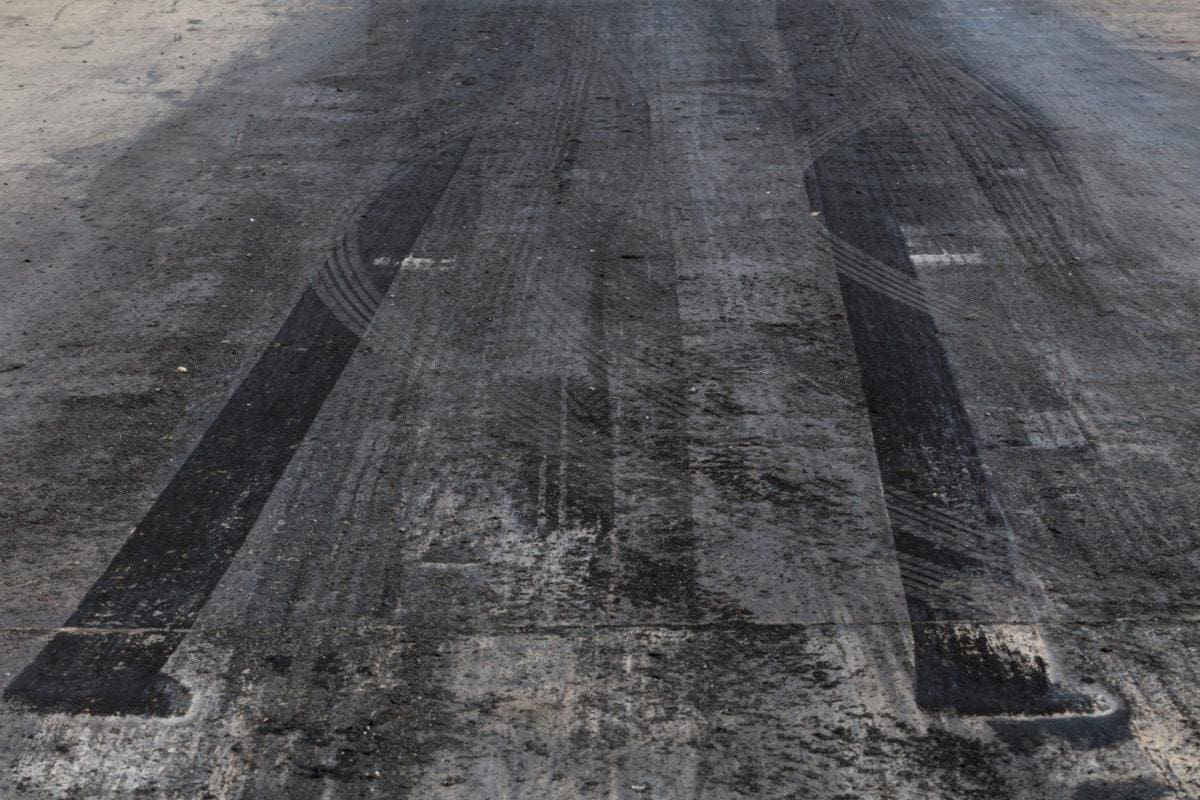
Contents
Introduction
The recipe for a successful American muscle car has always been simple. One part thunderous V8 engine. One part rear-wheel drive. Add a dash of attitude. Sprinkle in a low price. Stir vigorously until tires fry.
Although the flavors have evolved over the decades, gaining sophistication and complexity, that recipe hasn’t changed much since the 1960s, and our appetite for this uniquely American style of automotive cuisine is as voracious as ever.
Detroit keeps whipping up tasty dishes, delighting our taste buds with cars like the sweet and spicy Dodge Challenger SRT Hellcat and Ford’s Shelby Mustang GT500. But have you checked the prices on the menu lately? Wow, they’ve gotten expensive. Excuse me, waiter, there’s a fly in my soup.
Fortunately, there are still affordable American muscle cars out there. You just need to know where to look. Used muscle cars have always stretched the enthusiast’s performance dollar the furthest. And back in the 1990s, Ford, Chevy, and Pontiac were grilling up V8-powered Mustangs, Camaros, and Firebirds with plenty of power and attitude.
The fourth generations of the Ford Mustang, Chevy Camaro, and Pontiac Firebird are now more than 20 years old, and they’re quickly making the transition from used cars to desirable classics. Their values have inched up over the last few years, as the teenagers of the era begin to buy the cars they wanted in high school. But they remain cheap. Dirt cheap in some cases, with prices ranging from about $5,000 for those that have led a hard life, to around $25,000 for well-preserved and rare examples.
Is a 1990s American muscle car right for you? To help you cut through the clouds of tire smoke, we’ve created this buying guide. We’ll cover the similarities between the three models as well as their differences. Each has its own appeal, but buyers should be aware of their unique trouble spots, pros and cons, and current values.
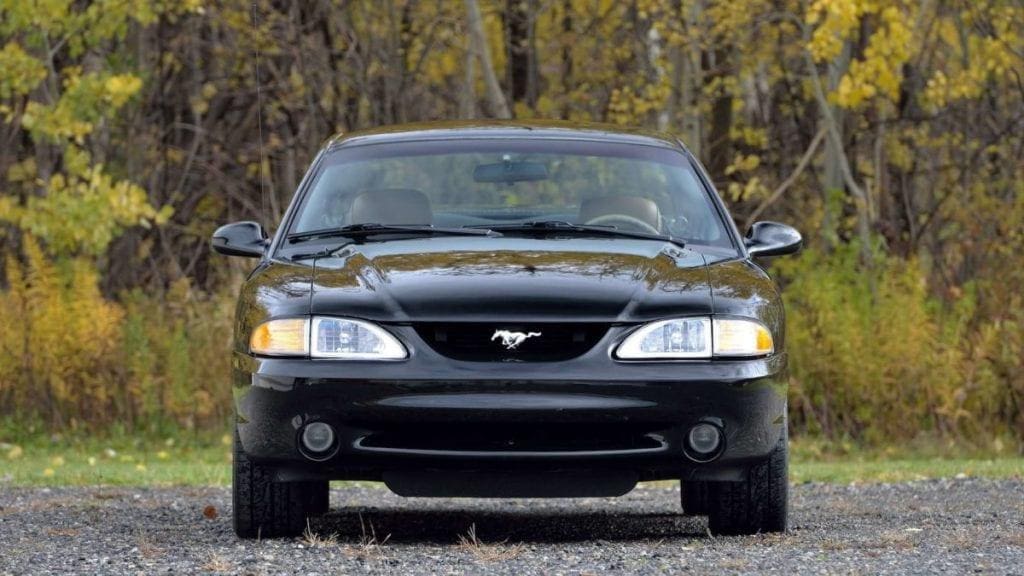
Ford Mustang (1994-2004)
After 14 years, Ford finally replaced the Fox-body Mustang for the 1994 model year. The muscle car’s fourth-generation was code-named “SN95” inside the automaker, and the term is still used by Mustang fans around the world. It was slightly larger than its predecessor, and was no longer a hatchback. For the first time since 1973, all Mustangs once again had a traditional trunk. T-tops were also history, but 17-inch wheels and tires were now optional.
Although its styling has aged well and includes some traditional Mustang elements, which harken back to the first 1965 model, its rounded lines were initially criticized. Some Mustang faithful said it looked more like a Toyota Celica than a Mustang. But Ford didn’t panic and didn’t make any meaningful design changes until 1999. The “New Edge” facelift wasn’t radical, but added harder edges and sharper angles more in line with the muscle car’s first three generations. Coupe and convertible body styles were available throughout its eleven-year production run, with GT and Cobra models getting V8 engines.
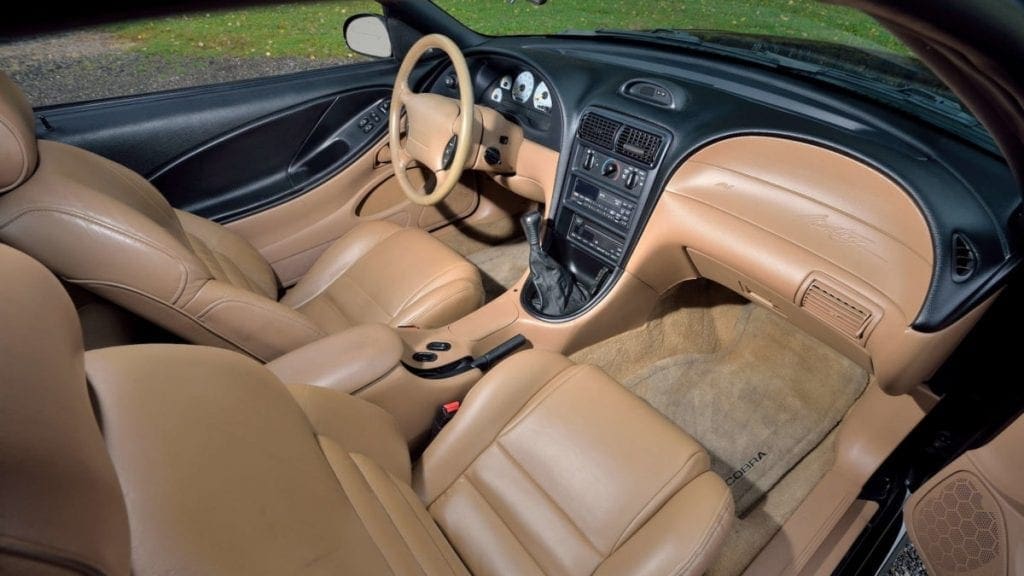
Although its 215 hp 5.0-liter V8 was a carryover from the previous year, the 1994 Mustang GT was named Motor Trend Car of the Year. The pushrod “Five-Oh” stuck around until 1996, when it was replaced by the Mustang’s first overhead cam V8, a design it still uses today. The “modular” 4.6-liter was a single overhead cam design, and produced the same 215 hp despite its smaller displacement. It was bumped up to 225 hp in 1998, but the real grunt was in the Mustang Cobra, which was hopped up by Ford’s Special Vehicle Team, or SVT. From 1996-1998 it was powered by a double-overhead cam version of the 4.6-liter making 305 hp and 300 lb-ft of torque.
GTs climbed to 260 hp in 1999, while the Cobras were now packing 320 hp — but there was some controversy around the Cobra’s increased output. Owners complained that their cars weren’t as quick or as powerful as they should be, and Ford halted sales while it sorted the situation. It restarted production after making design changes to the Cobra’s V8 and recalled all 1999 Cobras that had been sold to upgrade the vehicles. Before you buy a 1999 Cobra, ask for documentation that the needed changes were made.
More importantly, the 1999-2004 Cobras were the first and only Mustangs with an independent rear suspension (IRS) for improved ride and handling. GTs still had a solid rear axle. The IRS would finally return in 2015 on all Mustangs. Cobras were also only available with a manual transmission, a 5-speed from 1994-2002 and a 6-speed in 2003 and 2004. GTs are way more fun with the stick, but many buyers paid extra for the four-speed automatic, which sapped performance.
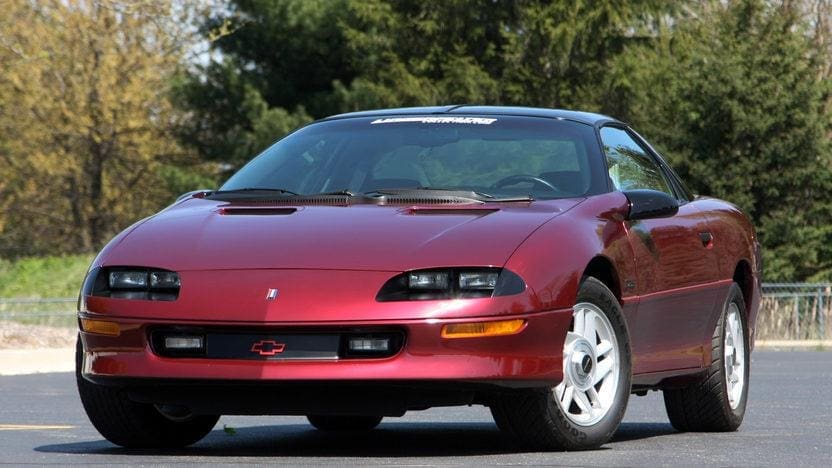
Chevy Camaro (1993-2002)
The fourth-generation of the Chevy Camaro beat its Ford rival to market by a year, and it was more radically styled with a severely-raked windshield and long snout. Coupes remained hatchbacks, while the convertibles got a traditional trunk. T-tops were still available, and the Z28 version was still packing 350 cubic inches of V8 muscle.
The 5.7-liter LT1 engine was also used in the Corvette, where it made 300 hp. In the Camaro, it was rated 275 hp and 325 lb-ft of torque, which made it considerably stronger than the Mustang GT. The Z28 also had a 6-speed manual transmission, but again many buyers went for the 4-speed automatic, which was standard. Either way, a Z28 would smoke a Mustang GT in a drag race.
These cars are quick, even by today’s standards. They accelerate from 0 to 60 mph in 5.5 seconds and cover the quarter-mile in 14.0 seconds at 100 mph. Top speed is 152 mph. By comparison, a 1994 Mustang GT hits 60 mph in 6.1 seconds, finishes the quarter mile in 14.9 seconds at 93 mph, and has a top speed of 137 mph. Although both cars have four-wheel disc brakes, the Z28 features anti-lock technology standard, while it was an option on the Mustang GT until 2005.
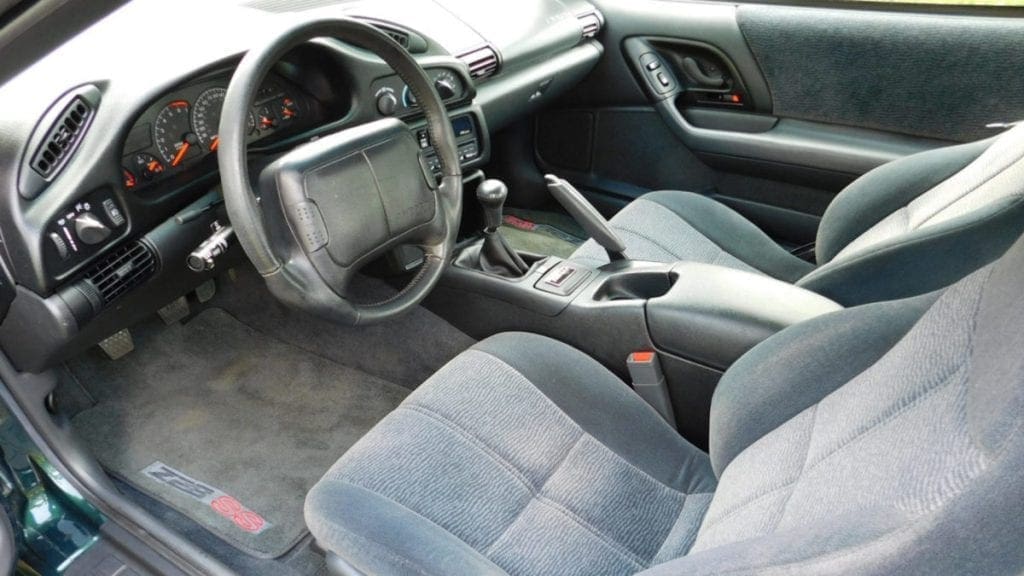
Reading a stack of old magazine road tests, we also learn that the rivals both weigh in at about 3400 lbs, which is roughly 300 lbs less than a 2020 Mustang GT. The Mustang rides a bit more smoothly than the Camaro, but the Camaro’s lower center of gravity gives it slightly better handling. In 1994, the editors of Car and Driver tested the two at the Waterford Hills race track in Michigan, and the Z28 consistently lapped the short 1.5-mile course a full second faster than the Mustang GT.
The editors also preferred the lower seating of the Camaro. “The Camaro has a much racier feel, an impression that begins when you plop into the driver’s seat. It’s a wide, low car, and the driver looks out through a radically raked windshield and over a rapidly dropping nose. By contrast, you sit bolt-upright in the narrower Mustang, the higher hood running out to a blunt front end,” says the comparison test.
In 1996, to compete with the Mustang Cobra, Chevy introduced the SS Package, which was created in collaboration with an outside tuning company called SLP Engineering. The optional package increased the output of the Z28’s V8 to 305 hp and added larger 17-inch wheels. The SS Package would change over the years, but would remain the hottest Camaro through 2002.
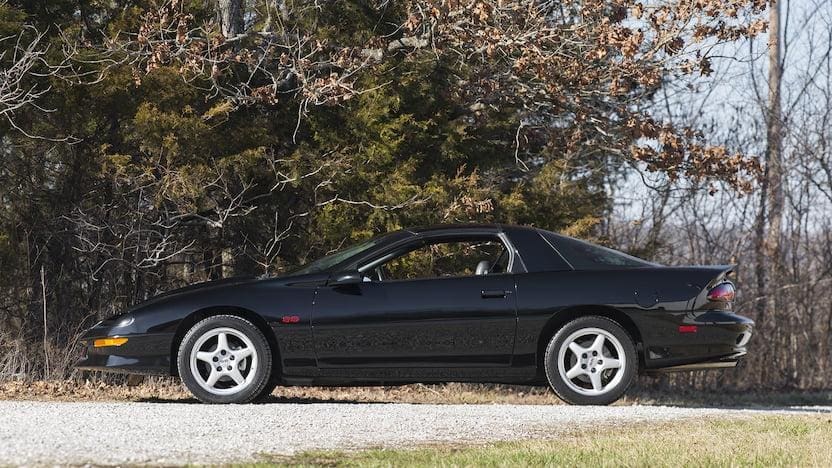
All Camaros got a controversial styling update for 1998, including a new grille, hood, and headlamps. But the real update was under the hood. Chevy replaced the iron block LT1 with the lighter all-aluminum LS1, an all-new generation of the 5.7-liter small block, which had debuted in the C5 generation Corvette the year before.
The LS family of engines was immediately found to be superior and remains in production today. They’ve gone on to become a favorite of hot rodders and car enthusiasts all over the world, and have been swapped into everything from 1932 Fords to dune buggies. The LS1 was initially rated at 305 hp, while SS models jumped to 320 hp. In 2001, those numbers climbed to 310 hp and 325 hp. A Camaro SS was still quicker than the Mustang Cobra, but not by much. Both cars could now hit 60 mph in a little over 5 seconds and cover the quarter mile in about 13.5 seconds.
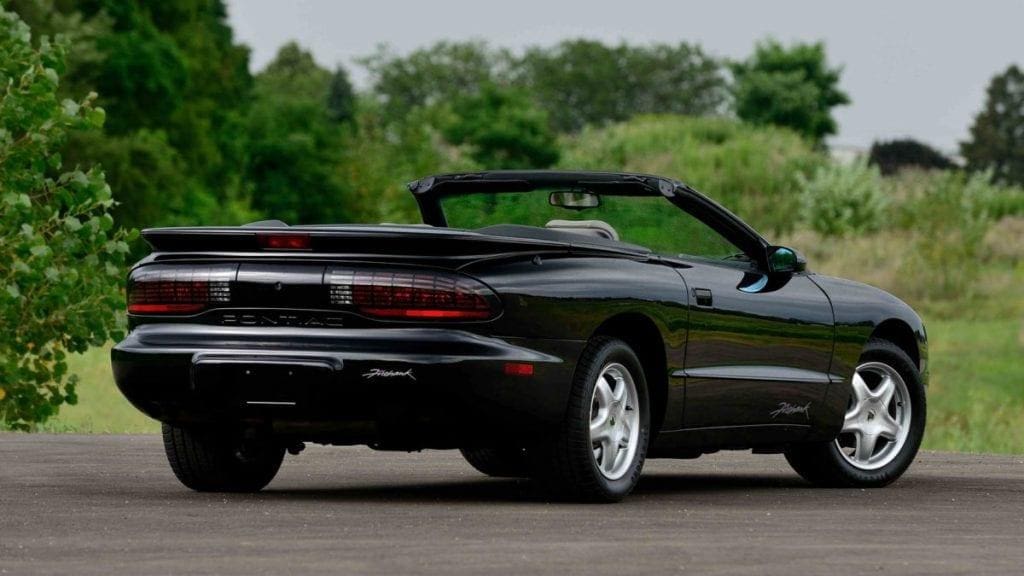
Pontiac Firebird (1993-2002)
Anybody out there remember Pontiac? The brand, which became a casualty of GM’s restructuring in 2010, gave us the first muscle car, the GTO, back in 1964. Its Firebird was originally launched in 1967, the same year as its platform twin, the Chevy Camaro. Both fourth-gen cars shared GM’s F-car platform, and would remain mechanically in lock step until 2002.
When the fourth-generation of the Camaro and Firebird debuted in 1993, production was moved from GM’s Van Nuys assembly plant to Sainte-Thérèse, Quebec, Canada, where the two continued to be built on the same assembly line. But Pontiac did things a bit differently than Chevrolet, and there are some key differences between the two models.
For instance, the Firebird had pop-up headlamps, a design that isn’t really used anymore because of the increased complexity, cost, and weight. They give the Pontiac a racier look and also a more retro vibe. Unfortunately, they can be problematic with age, sticking up — or worse, down.
Pontiac also offered the Firebird in three V8 trims, as opposed to two in the Camaro. The Trans Am and the more simply styled and less expensive Formula shared their engines, transmissions, solid rear axle suspensions, brakes, and other components with the Camaro Z28, while the Firehawk was the Firebird version of the Camaro SS. The performance of any V8-powered Firebird is therefore identical to the performance of the equivalent Camaro model.
The hottest Trans Ams and Formulas, however, were equipped with the optional Ram Air Performance and Handling Package, which Pontiac enthusiasts usually refer to by its alphanumeric option code, WS6. It was introduced in 1996 to help fight off Ford’s new more powerful SVT Mustang Cobra, and would remain on the books until the last Firebird rolled off the assembly line in 2002. WS6 cars are easily identified by their Ram Air hood with two large nostrils. Aside from Firehawks, they were the quickest and fastest Firebirds ever produced.
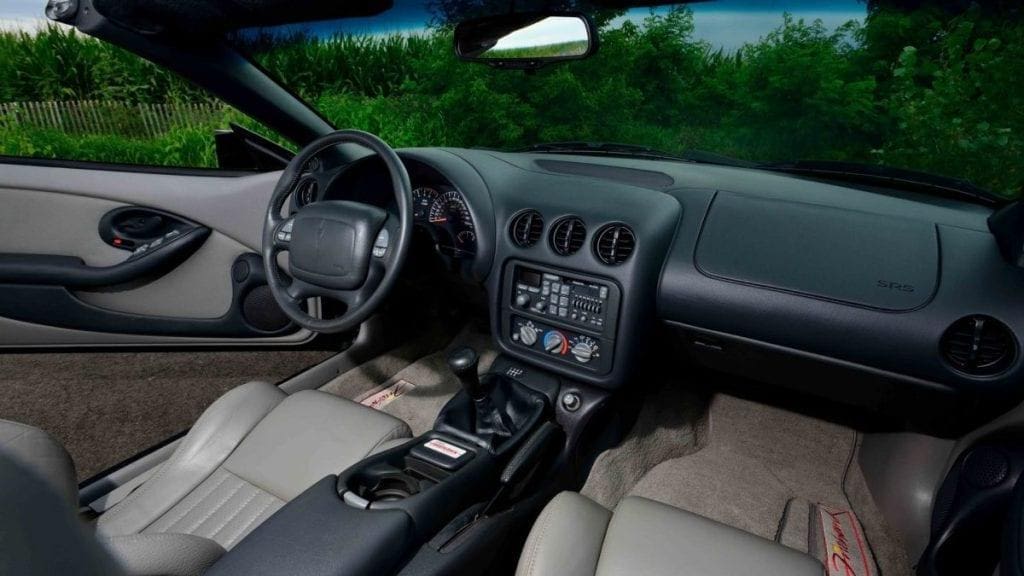
Firebirds also had a unique interior, with a different dash design than the Camaro, and its own gauge cluster. Although the two shared quite a bit inside, the Firebird’s interior has a slightly more upscale feel. However, neither offers the retro vibes of the Mustang’s interior, which includes some elements taken from Mustang cabins of the late 1960s.
Special Editions and Pace Cars
Over their decade-long production runs, all three of these muscle cars were also offered in a long list of special editions. We won’t cover them all, here are some notable highlights.
The 2001 Mustang Bullitt became an instant classic by commemorating the Highland Green 1968 Mustang that Steve McQueen drove in the movie Bullitt. Ford even did a version of the movie car’s Torq-Thrust wheels and bumped the horsepower up slightly to 265. Total production was just 5,582 units — 3,041 in Dark Highland Green, 1,819 in Black, and 722 in True Blue. But it was such a hit that Ford still offers a Bullitt version of the current Mustang.
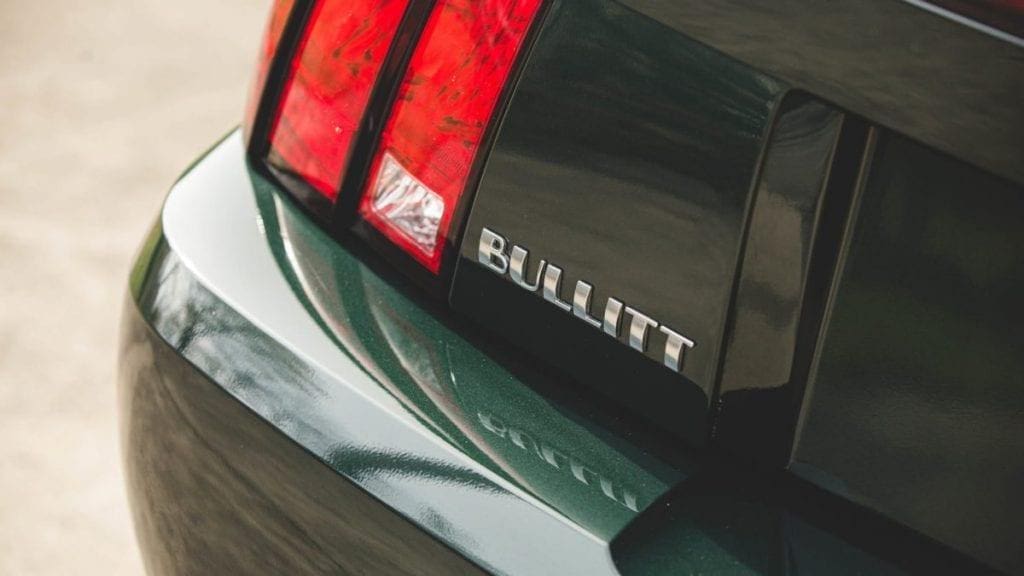
Ford followed it up quickly with the Mach 1 in 2003 and 2004, bringing back another popular name from the late 1960s and early 1970s. The Mach 1 got a retro interior with old school gauges, flat black graphics, the 1996-1998 Cobra’s more powerful 305 hp engine, a modified suspension, and a unique and functional shaker hood scoop fashioned after the one offered in 1969 and 1970.
In 1993, the Camaro Z28 paced the Indy 500, and Chevy sold 633 replicas with the same white, black, and colorfully-striped paint scheme as the one used on the race track.
The following year, Pontiac released the 25th Anniversary Trans Am. All were white with a blue stripe down the center, reminiscent of early Trans Ams (1970-1972). They also featured white-painted, five-spoke wheels and white leather seats. Five years later, the 30th Anniversary Trans Am featured a similar design, only tweaked with two stripes (like the first-year car in 1969) and blue anodized wheels.
What to Look Out For
Always look for rust. Even if you’re buying a car in the Arizona desert. And not just in the floorpans and quarter panels. Also check the suspension parts. If a car is rusty, walk away. There’s always another one.
Unlike the Mustangs, the Camaros and Firebirds aren’t metal from stem to stern. While the majority of their bodies are steel, their front fenders, doors, and decklids are plastic. The material is dent resistant; however, three decades out in the hot summer sun and cold winters can warp and ripple the surfaces. Also, the plastic fenders can pull loose from the bottom over time, causing them to flap in the wind.
If you’re shopping for a WS6 example, watch out for clones or replicas. The aftermarket has offered WS6 wheels and hoods for years, so it’s easy to make a standard Trans Am or Formula look like a WS6. To be sure, check driver’s door jamb and read the option codes listed on the Service Parts Identification (SPID) sticker. WS6 should appear there. If it’s missing, you’re not looking at a real WS6. If the sticker is missing, the car has probably been repainted, or its door may have been replaced. Either way, it’s a red flag.
Later Camaros and Firebirds powered by the LS1 are preferable to earlier versions. While the LT1 V8 is powerful and durable if cared for, its Opti-Spark ignition (located at the front of the engine) can have problems with moisture. Check the water pump for leaks as well as the other seals that close the cooling system. Other potential problem areas to inspect include EGRs, fuel pumps, and fuel sending units.
If oil changes are neglected, the Mustang’s SOHC 4.6-liter V8 can have problems with its long timing chain, which drives the overhead cams. Its plastic guides will wear prematurely, causing the timing chain eventually to fail. That’s a big deal and expensive to fix. If you hear a chain rattle following a cold start, it’s a symptom of a potentially large problem.
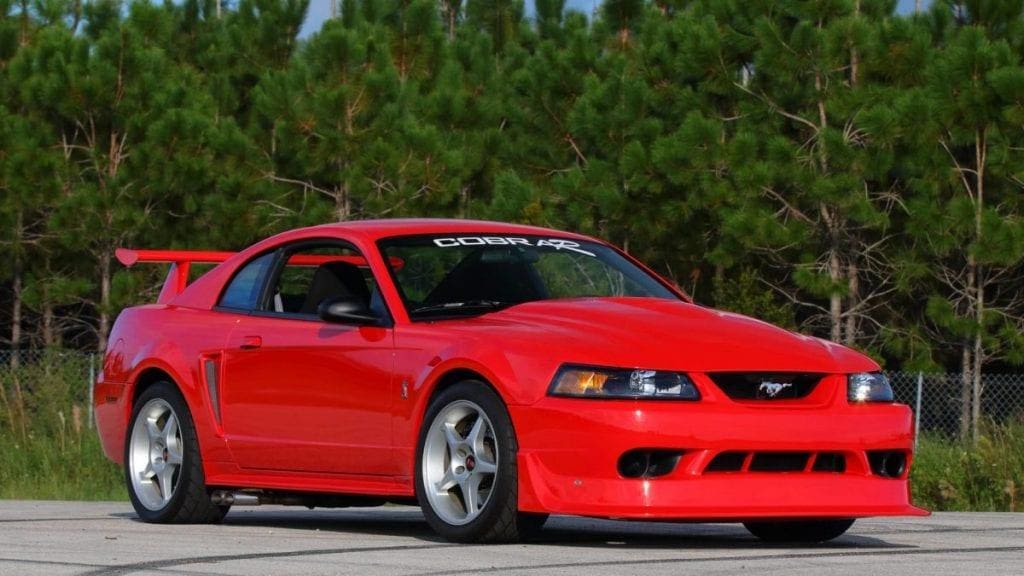
The Bottom Line
The muscle car we want the most from this period is a 2000 SVT Mustang Cobra R. This special model was powered by a larger 5.4-liter DOHC V8 making 385 hp, and it featured special suspension components, body panels, seats, as well as a side exhaust. But only 300 were made, and they’re expensive. Hagerty’s Valuation Tool pegs the price of a “good” (#3) condition Cobra R at $21,600; however, many of the 300 remaining examples are very well preserved and sell for much more.
For a Mustang on a tighter budget, we would search out a model built after 1998 to take advantage of the more attractive and edgier styling of the later cars (dubbed “New Edge”). Our first choice would be a 1999 SVT Cobra, which has the more powerful 320 hp engine and also the independent rear suspension. Both coupes and convertibles were offered, and in good condition, they sell for about $10,000. That is an exceptional value for a special Mustang with potential investment upside.
While we also really like the Mach 1 Mustang, we prefer the Bullitt edition. Ours would have to be Highland Green. They were offered for one year only, so they’re pretty rare. But remarkably these also sell in good condition for only about $10,000.
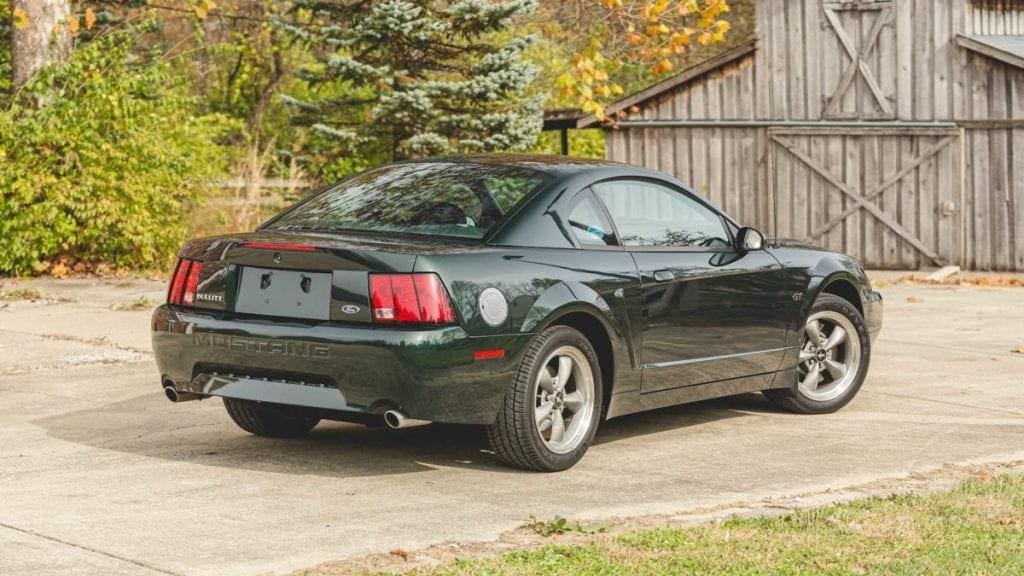
For Camaros and Firebirds, we would also stick with later versions to get the sweet LS1 V8, and we strongly prefer examples with the 6-speed manual. A good condition 1998 Camaro SS is an excellent value at around $13,000. But at less than ten grand, a standard Z28 with 305 hp is an even better buy.
When it comes to the Firebirds, we like the understated Formulas better than the Trans Ams. And the WS6 package, which bumps the power up to 320 hp and improves the handling, is a must have. You can get a good one for less than $13,000, which is about a $2,000 premium over a non-WS6 model.
With great examples available for less than five figures, 1990s American muscle cars represent some of the best values on the used car market today, whether you’re planning to trailer yours to Radwood events or drive it until the wheels fall off.
Photos courtesy Ford, GM, Mecum, and Wikimedia Commons